How The Times UK Runs Their Continuous Discovery Process — with Vistaly
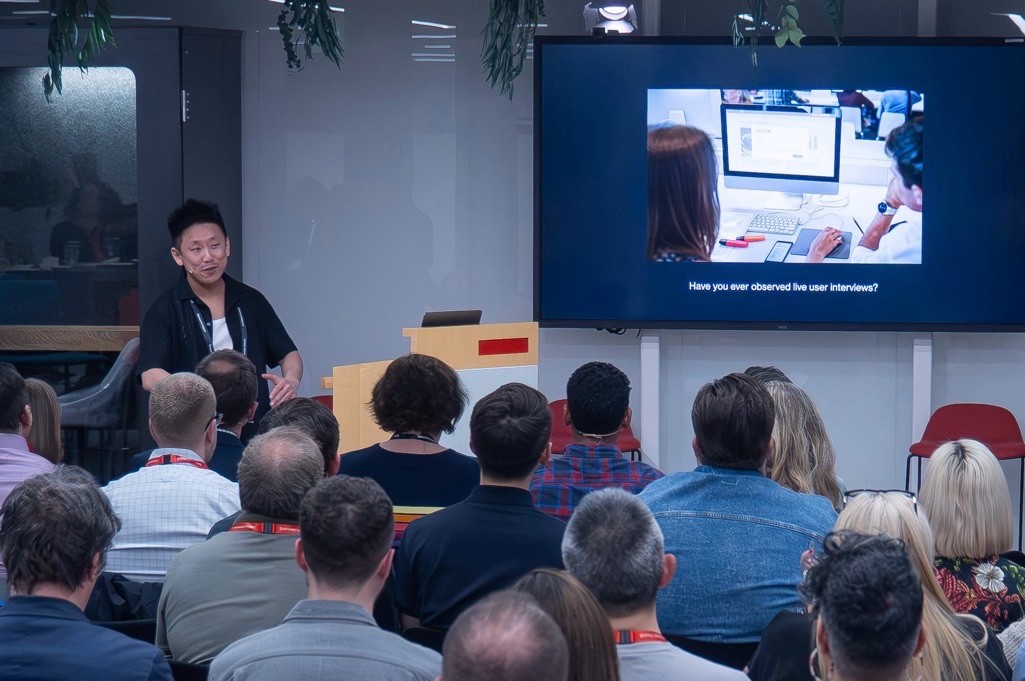

Product Designer, The Times UK


Edwin Yuen is a product designer at The Times in London. His squad mostly focuses on the puzzle section of The Times. Edwin says The Times’s customers are “People who like to keep up to date with current affairs, especially with a well-respected newspaper such as The Times, London. They’re intellectual people, informed, and like to keep their brain sharp. This influences the pastimes they choose which may include playing puzzles online such as crosswords and sudokus.”
Because they’re focusing on crosswords and other types of puzzles, Edwin’s squad defines their outcomes in terms of engagement, retention, and building habits. “We want to create sticky habits that keep people on board,” says Edwin.
And when it comes to the specific opportunities Edwin and his squad are focusing on, he says, “We’re asking how might we help our subscribers keep mentally sharp, whether they’re a commuter who wants to get their brain going at the start of their day or a retired person who wants to make sure they stave away things like dementia. How might we best serve puzzles as a tool and game to help them achieve this?”
Edwin and his squad began adopting continuous discovery habits about a year ago. The product manager in their squad recommended reading Continuous Discovery Habits and the team was inspired to start applying the concepts right away.
Here’s how Edwin describes the impact of working this way:
Plus, taking a continuous discovery approach gives the product team more autonomy and ownership over their work. “I’ve worked in places where you just get told what to do and you just feel like a cog in the wheel. But now we’re actually owning the space and dictating what direction we should go in—and that’s how it should be. Because the former is full of assumptions based on people who don’t speak to customers. This way we know we’re much more likely to reach the right outcomes.”
Right around the time when they started adopting continuous discovery habits, Edwin and his team were inspired to use Vistaly to build their opportunity solution trees thanks to a recommendation from a former manager. Edwin says,
The structure that’s built into Vistaly helps Edwin’s team keep track of the metrics and KPIs their work is laddering up to as well as their product outcomes and the opportunities that can influence them. Here’s how Edwin explains it: “We use Vistaly to help us visually understand the best opportunity spaces that can help us drive product outcomes and better customer experiences together.”
One of the reasons Edwin finds Vistaly so powerful is that it gives you the ability to visually interact with an opportunity solution tree in real-time. “Where Miro is quite generic with boxes and lines, Vistaly goes deeper showing you key information such as the insights we find from user interviews to opportunities to help us prioritize the work we conduct. Vistaly also allows you to organize cards by status such as Now, Next, Identified, etc.”
When you go to build an opportunity solution tree in Vistaly, Edwin explains that it prompts you to start from the top, either with your OKRs or KPIs, before you begin to fill out your opportunities. Vistaly automatically color codes each type of card (outcome, opportunity, solution, etc.) so at a glance you can visually differentiate between the different branches of your tree.
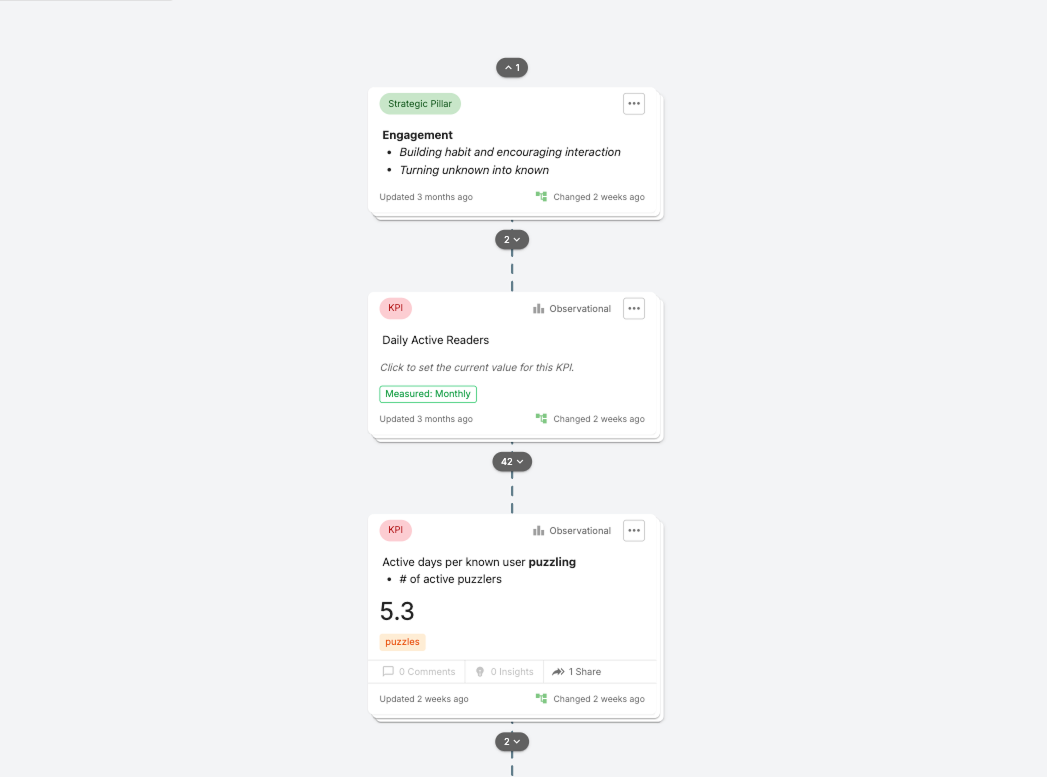
For Edwin’s squad, the outcome they’re focusing on is trying to get people to engage with puzzles more frequently. This means they’re asking themselves questions like, “How might we improve the puzzle experience so that they’re more likely to play puzzles?”
When it comes to the opportunity level of the tree, Edwin and his team have identified opportunities like, “I can’t find my favorite puzzles quickly and easily every day.” For each opportunity, they have linked insights directly from customer interviews.
Vistaly allows you to quickly see the number of insights linked to any given opportunity, which is a simple way of tracking how often the same opportunity has come up.
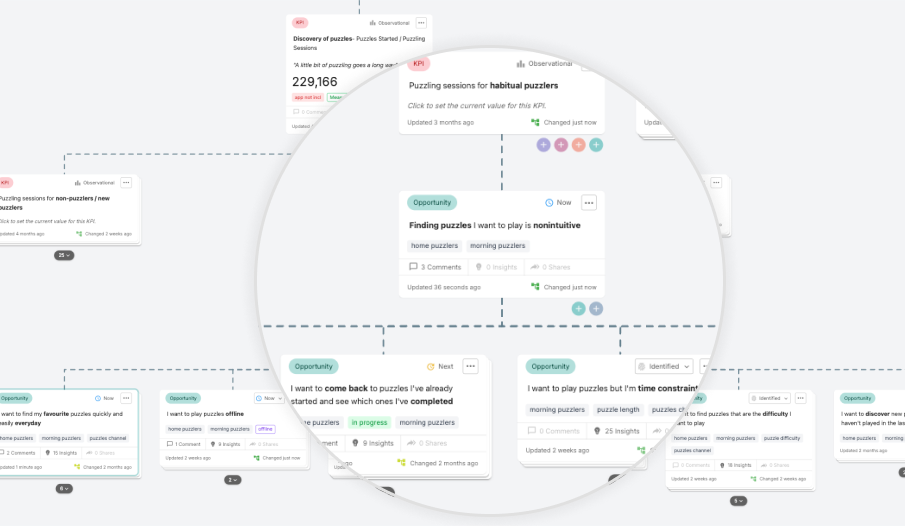
Below the opportunity layer, Vistaly allows them to create potential solutions that are linked to specific opportunities. Each solution has a status attached to it as well, so it’s easy for the team to track whether they’ve done any assumption testing or taken any other action related to any given solution.
Edwin points out that once you change a solution’s status to done, Vistaly will automatically update the status of its parent opportunity to done as well. “The complexity of this just can’t be matched with other tools that are out there,” says Edwin.
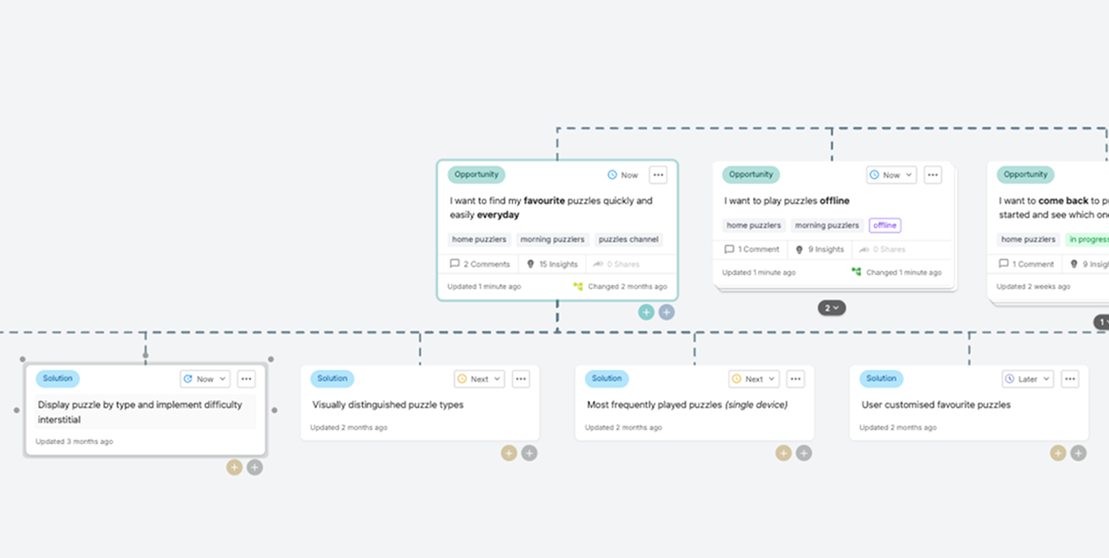
Edwin has recently started experimenting with Vistaly’s Interviews feature, which allows you to import interview notes, transcripts, or snapshots. You can tag anything from the Interviews page and send it directly to an opportunity on your tree.
Edwin finds this incredibly useful for capturing the actual language that his customers are using. “It gives it so much more context and it helps us prioritize which opportunities are most likely to impact our business goals,” he explains.
And because up until this point, Edwin has been using a series of tools to gather and synthesize insights from interviews, he can see that this will save him a lot of time and effort moving forwards.
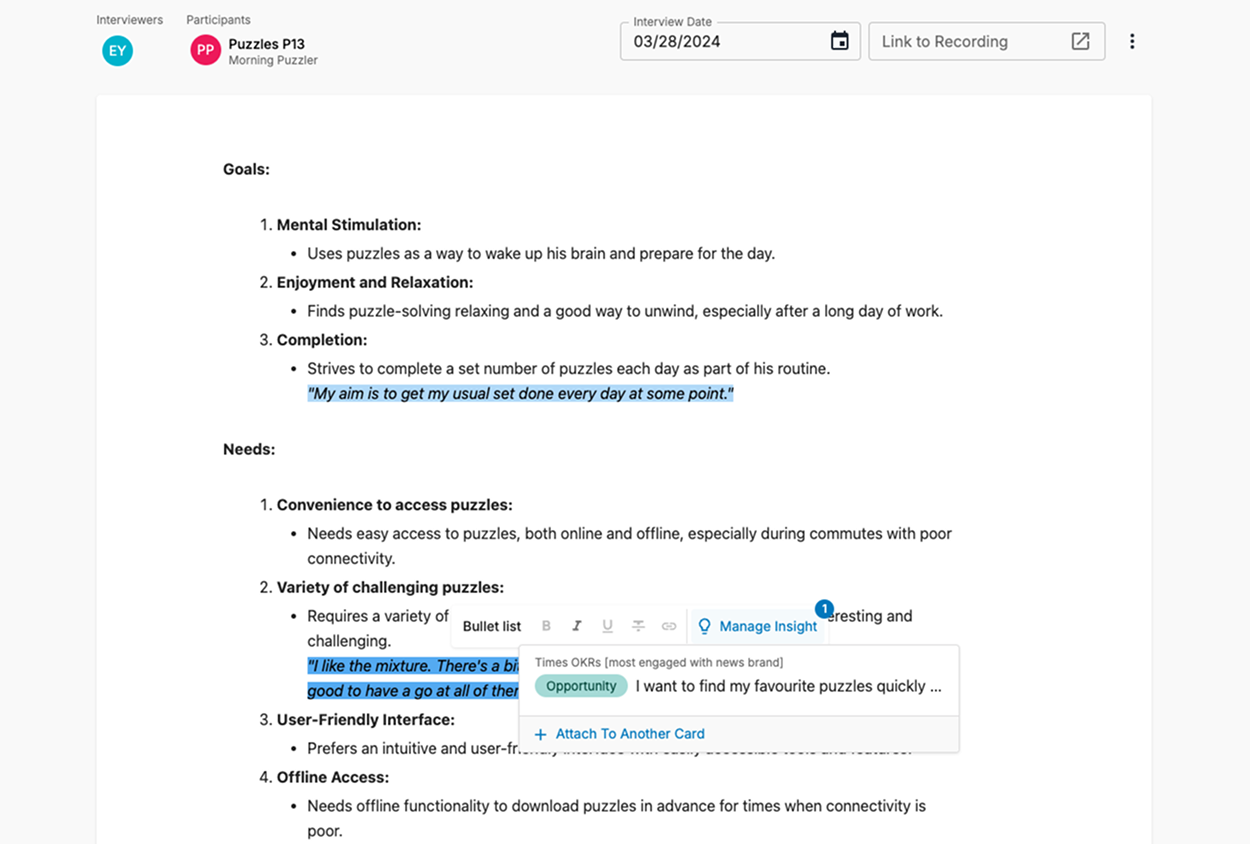
Edwin shares a few of the reasons why he and his team are convinced Vistaly is the right tool for building opportunity solution trees at The Times.
While he uses other tools like Miro and Jira, he finds they’re way more generic in what you can do with them.
Vistaly helps Edwin’s product team stay focused, but it’s also helpful for keeping their stakeholders informed of what they’re doing. “We can share this with our stakeholders and they can just view it in their own time. They don’t need to come to us and ask us what we’re working on,” says Edwin.
Edwin sees the value of continuous discovery as focusing on outcomes over solutions and making sure that your work is connected to your business goal. “That’s what an opportunity solution tree does. And Vistaly just allows you to do that,” he says.
Vistaly is still a relatively new tool—especially compared to other ones we’ve mentioned like Miro and Jira. Edwin’s team has had the opportunity to share their feedback with Vistaly’s CEO. “It’s been really useful being a part of that process,” says Edwin.
For anyone who’s considering using Vistaly for their own opportunity solution trees, Edwin offers the following key learnings and takeaways.
Make sure you have a clear understanding of your business goals so your product goals are aligned with them. Edwin recommends checking in with your product and business leaders to achieve this.
Edwin says one of the disadvantages of opportunity solution trees is that they can get really big quite quickly. And this can especially be problematic when you’re sharing your tree with stakeholders who don’t have time to search through everything and find the branch that’s most relevant to their concerns.
Luckily, Vistaly allows you to share a condensed view where the cards are collapsed. This helps keep your stakeholders focused on the most important parts of your tree.

Edwin also likes to bold certain keywords to highlight information and makes his trees easy to understand at a glance.
As you would with any new tool, Edwin recommends allowing yourself time to practice and make improvements as you go along. “That’s how you get better,” he adds.
A single workspace for connecting strategy, discovery, and delivery –– visually
©2025 Vistaly, Inc.
Product updates, exclusive live events, and more